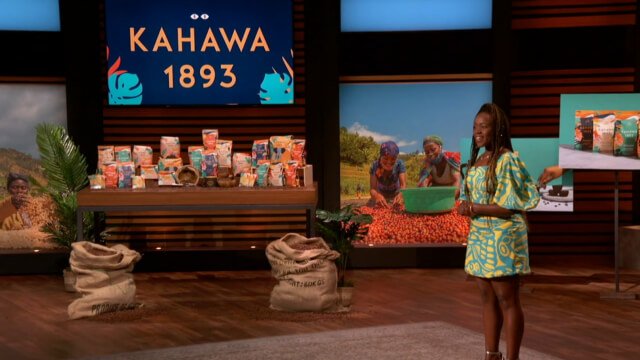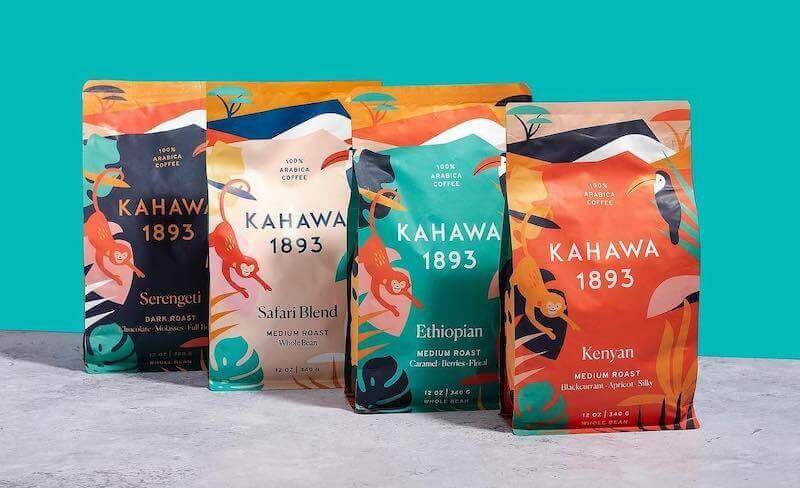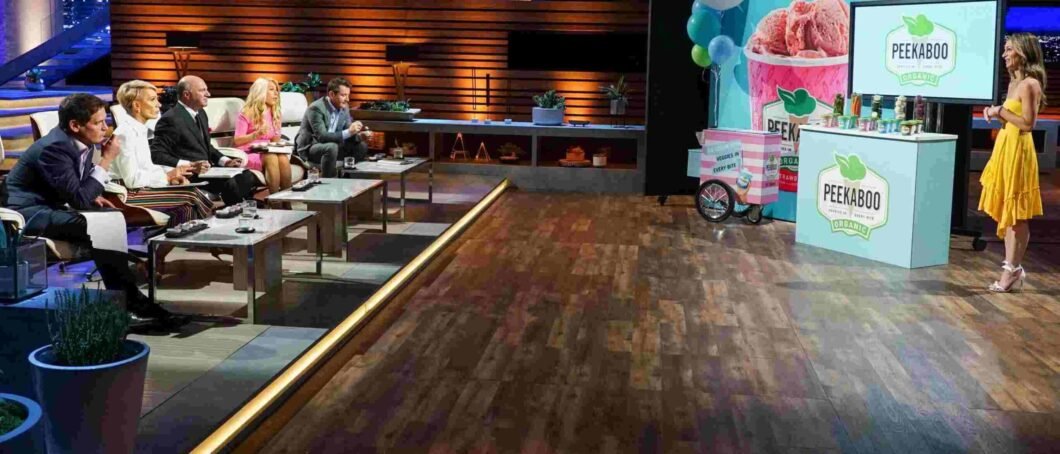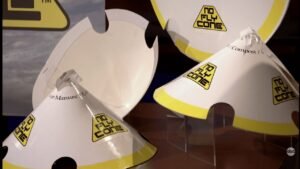Let’s bust a big Shark Tank myth right up front—securing a deal on TV means instant riches, right? Not quite. Sometimes the real hustle starts after the cameras shut off. That’s why Kahawa 1893’s pitch stands out, not just for the coffee, but for the bold business play and the founder’s straight-up strategy. Let’s see what actually happened when this Kenyan coffee brand walked into the tank and find out if the hype translated into real-world wins.
Meet the Founder: Margaret Nyamumbo’s Coffee Roots Run Deep
You don’t fake passion like this. Margaret Nyamumbo didn’t just show up with a slick, VC-polished presentation—she brought her story. She grew up on a coffee farm in Kenya, watching the grind (literally and figuratively) that women do with little thanks and even less money. When Margaret came to the Shark Tank arena in Season 14, Episode 14, she made it clear: this wasn’t just about premium coffee. It was about flipping the system so women farmers finally get a fair shake. You could tell she was used to rolling up her sleeves. Not just another founder with a business plan, but someone with real ink on her hands from the work.

How Kahawa 1893 Is Different—And Why It Mattered
Here’s the quick and dirty: most coffee companies sell you a story, then buy from faceless suppliers. Kahawa 1893 does it different. Their beans are straight from Kenya, direct from small, women-led farms. But Margaret didn’t stop with the supply chain. She built something no big java brand even thought about—a QR code tipping system on each bag. Scan it, tip a farmer, and the company matches your amount, dollar for dollar.
It’s direct action, not empty marketing. I’ve seen a lot of brands flop because they treat social impact as fluff—Margaret baked it into the business model. The Swahili name, Kahawa, means coffee, and 1893 is the year coffee started being produced in Kenya. Forget fancy slogans; this is connection and authenticity that’s hard to fake.
The Shark Tank Numbers: Ask, Drama, and Who Jumped In
Let’s face it, most Shark Tank asks are either delusional or ambitious. Margaret walked in sharp—asking $350,000 for 5% equity. That’s a $7 million valuation. Now, plenty of founders shoot too high and get slapped down. But her numbers—and the mission—made the room sit up.
She got multiple sharks interested, but the focus really shifted when guest shark Emma Grede stepped in. Grede knows the grind: she’s built companies like Good American and SKIMS from the ground up. She countered with $350,000 for 8%. That math drops the company’s post-money valuation to $4.375 million, still a big number for a young coffee brand. Margaret took the deal. I’ve seen founders get greedy and lose everything—she played this by the book but with a twist. She traded a bit more equity for a strategic partner, not just cash.

Kahawa 1893’s Net Worth: Real Numbers, Real Stakes
Let’s talk dollars. On air, Kahawa 1893 was valued at $7 million—350K for 5%. But the actual deal with Emma Grede (350K for 8%) put the company at a $4.375 million post-deal valuation. Here’s where most people mess up: a Shark Tank valuation isn’t net worth—it’s a snapshot, not reality. But it does show confidence, both from the founder and the shark. For a specialty coffee startup, those are strong numbers.
You reach those numbers with more than hype: Margins have to be healthy, the market must care, and your story needs to sell both in-store and online. Kahawa 1893 showed all three.
Since the Airing: Did the Deal Actually Change the Game?
Here’s a question I always ask about Shark Tank companies: did the TV moment make them or break them? Kahawa 1893 didn’t just enjoy a short-lived boost; the brand turned the exposure into sustained growth. Grocery stores picked it up. Social feeds started buzzing—especially during Black History Month—about a Black-owned, women-led coffee brand that actually gives back.
The deal with Emma Grede was more than a handshake on TV. It opened up serious doors, especially in national retail. And if you’re thinking, Sure, but is it just hype?—the sales numbers don’t lie. Increased distribution, more SKUs, and a fanbase that sticks. I’ve seen plenty of Shark Tank all-stars flame out when the orders finally come in. Kahawa 1893 kept shipping, kept growing, and kept the mission front and center.
The Real Impact: Money for Women Farmers, Not Just Marketing
Most social impac brands get lazy after buzz wears off. Kahawa 1893 kept the heat on. That QR code tipping system? It actually works—consumers send real cash directly to the women who picked their beans, and the company matches every dollar. This isn’t a feel-good, one-time 10% to charity program. It’s money in pockets—often for women who’ve never even had their own bank accounts before.
If you want to build a brand that outlasts trends, you need this kind of backbone. It means their pitch is as strong now, off-camera, as it was for the sharks. That’s rare.
Where’s Kahawa 1893 Headed? Real Expansion, Not Just Buzz
So what’s next? Kahawa 1893’s playbook is clear—expand the retail footprint, go deep on direct-to-consumer, and double down on the core mission. 2024 and 2025 updates show deals with major U.S. retailers, continued press, and a product line that still leans into Kenyan origin. They aren’t chasing fads or pumpkin spice distractions. They know what makes them different and stick with it.
This isn’t a Bombas story (yet)—they don’t sell socks with a viral story. But the stickiness is real. I wouldn’t be shocked to see them drop new, mission-led products in or around coffee—maybe branded accessories or merch. But for now, coffee’s still the game.
For Hustlers: The Real Shark Tank Lesson
So what do I take from this? First, the numbers matter, but the WHY matters more. Margaret had her numbers down, yes, but more than that, she knew how to sell her story, her mission, and the business model. She didn’t give the farm away for a TV moment—she negotiated for a partner who could open new lanes.
Second, follow-through counts. Most companies ride the Shark Tank spike and coast until sales slump. Kahawa 1893 punched right through that plateau by turning attention into distribution and real revenue. No shortcuts. No wishful thinking.
Third, don’t underestimate boring industries if you’ve got a real differentiator. Coffee is crowded—everyone’s got a cousin selling bags online. Kahawa 1893 broke through with something unique and actionable.
And last, make sure your impact story is more than just marketing copy. If you promise social good, prove it with your receipts (or in this case, tip match email confirmations). Kahawa 1893 does.
FAQs for the Serious and the Curious
Is Kahawa 1893 still in business after Shark Tank?
Absolutely. They’re expanding—more stores, more online buzz, and no sign of slowing down.
Did the deal with Emma Grede actually close?
Yes. This wasn’t just for TV—Emma Grede is on board and helping drive the strategy.
Where can I buy Kahawa 1893 coffee now?
Major U.S. retailers, grocery stores, and directly from their own website. Check their latest listings for new store launches.
How does the tipping system for farmers work?
Scan the QR code, tip the farmer, and Kahawa 1893 matches every dollar. It’s a direct, transparent way to support women growers.
What was Kahawa 1893’s sales before going on TV?
Detailed sales weren’t disclosed, but the business was well past idea stage with strong retail proof—hence the high valuation.
What is Margaret Nyamumbo’s background in business?
Margaret has both on-the-ground farming experience (from her family farm) and business chops, having worked in high-level finance before launching her own brand.
Does Kahawa 1893 only sell Kenyan coffee?
Yes—the focus is premium Kenyan beans. That’s their unique selling proposition and what they’re sticking with, for now.
Has the company expanded outside coffee?
Not yet, but possible in the future. For now, they’re all-in on coffee and the story that grounds it.
The Final Grind: What Can You Learn?
Kahawa 1893 didn’t just grab their 10 minutes of fame—they capitalized on it with substance. If you’re a founder, side hustle pro, or just someone who loves a good Shark Tank plot twist, pay attention. Don’t just pitch to look good on TV. Build a business that holds up long after the lights go off.
Margaret and Kahawa 1893 proved that betting on purpose, numbers, and strategy can still win the day—even in a crowded market with tough sharks. That’s real shark worth. And that’s how you change the game, one cup (and one smart deal) at a time.
For more founder stories, breakdowns, and what’s real versus Shark Tank showbiz, check back here at SharkWorth. We’re watching where the next hustle wins—or flames out.










